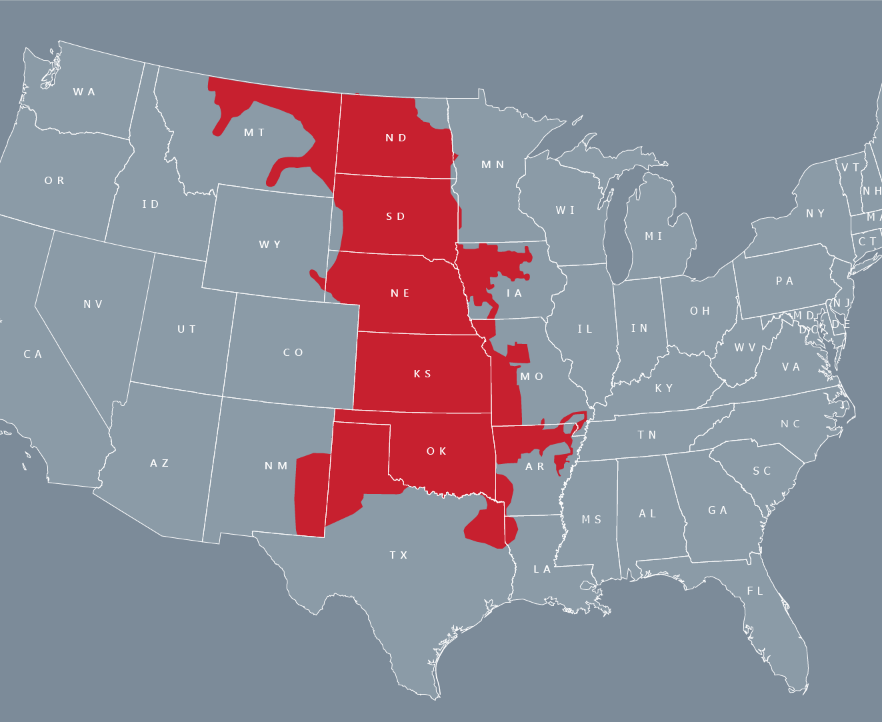The Western states have the renewable resources of wind and solar in abundance. But the big power needs lie east in the population centers of the Midwest and the Atlantic Coast. The West generates and the East consumes.
Since the introduction of utility-scale wind turbines in the 1980s, a lack of transmission has led to growing frustration for generators and planners.
In a world without other considerations, new power lines would streak across the country, bringing clean energy to consumers in the East.
The idea of west-to-east transmission is dear to the hearts of renewable enthusiasts, and the federal government but, especially, to the generating utilities of the West.
Not the least of these is the Tri-State Generation and Transmission Association , a rural electric cooperative, and its colorful and dynamic CEO, Duane Highley. He is the consummate Western outdoorsman and individualist: He rides motorcycles, hunts, fishes, and is an active musician and churchman. The antithesis of a staid utility executive.
Collectively Joining The SPP
The good news for Tri-State and a community of utilities in the West is that they are collectively joining the Southwest Power Pool’s regional transmission organization. This will support reliability and affordability with more clean energy, help them with a variety of issues, and enable power to move east.
Initially, seven Western utilities will join the SPP in 2026 and will start to enjoy benefits, which will include the ability to sell surplus power into a larger market and will enable them to build more renewables with the assurance that there are markets and other services. More Western utilities are expected to join in time.
The SPP is unique, Lanny Nickell, its executive vice president and chief operating officer, told me. It is the only electrical entity that has connections to the Eastern and Western grids, which make up the national power grid.
This, Nickell said, will enable the Western utilities to take advantage of the geographical reach of the SPP and to enjoy so-called day-ahead pricing and standardized reserve margins that support reliability and resilience.
Contrary to popular belief, there are three separate electric grids: the Eastern, Western and ERCOT — which is a separate Texas entity. The Eastern and Western grids are subject to the jurisdiction of the Federal Energy Regulatory Commission. Texas chose to reject federal oversight of its electrical system; hence, it isn’t part of the national grid.
In 1999 FERC issued Order 2000, which encouraged utilities to form Regional Transmission Organizations or Independent System Operators. The difference is mostly semantic.
The SPP integrated marketplace was launched in 2014. It has a wide balancing area which extends up the middle of the country, from the Texas border to close to the Canadian border.
It is something of a bridge between the Eastern and Western grids and offers utilities and their customers many advantages. These advantages weren’t wasted on Highley when he arrived at Tri-State in 2019 and began campaigning for an RTO, more efficient markets, and better transmission within and outside of the region.
When I met with Highley in his office, in Westminster, Colorado, a couple of years ago, and in conversations since, he emphasized the need for his utility as well as others to reduce their historic dependence on coal. Tri-State is shedding much of its coal and is heavily committed in wind and solar, either as an owner or by buying in green power on contract.
Deciding Between California ISO, SPP
Highley has been recommending that Tri-State and other Western and Mountain utilities form an RTO or join an existing one. The choice was to join California ISO, form their own or go with the SPP.
The SPP won hands down because of its strong member governance and efficient markets, and its ability to move some power north or south as needed — especially west to east to take advantage of not only the renewable resources in the West, but also the time-of-day differential.
The sun is still shining in the West when it is setting in the East, creating a valuable power surplus to help with peak power at sunset.
At present, most of the surplus generation in the West is wind. But going forward, the SPP’s Nickell told me he expects more solar to be installed.
Wind and solar complement each other, as in the West, he said, because the wind tends to blow at night and solar is available by day. Wind is very important for native load in the West as well as a way to export electricity.
While joining the power pool doesn’t solve the west-to-east transmission problem, it does help. The need for new transmission lines remains, and so does the intransigence of the not-in-my-backyard opposition. The full benefit of wind and sun won’t be realized until electricity can flow freely, not via workarounds.
Highley told me in one conversation, “You take what you can get and keep campaigning.”
Read the full article here





